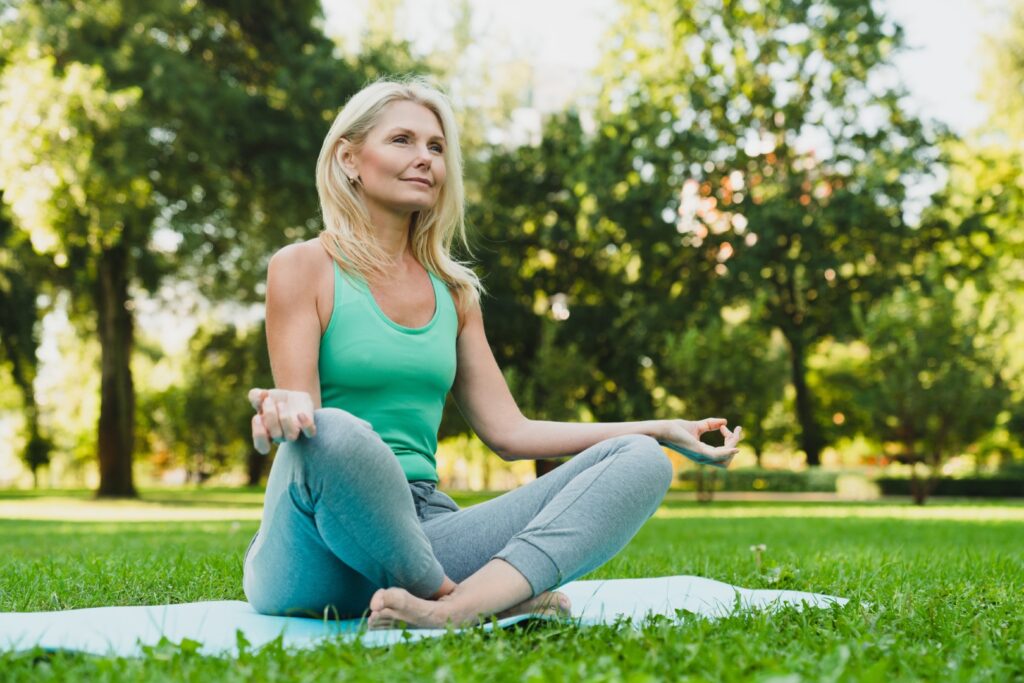Staying active and prioritizing fitness becomes even more important as we age. Regular exercise offers a multitude of benefits for seniors, including improved mobility, enhanced cognitive function, and a higher quality of life. However, it’s essential to tailor exercise routines to suit the specific needs and capabilities of seniors. In this blog, we will explore the importance of fitness for seniors, discuss key considerations when designing an exercise program, and provide practical tips for staying active and healthy as you age.

Understanding the Benefits of Exercise for Seniors :
Regular exercise provides numerous benefits for seniors, including improved cardiovascular health, increased muscle strength and flexibility, enhanced balance and coordination, and reduced risk of chronic diseases. Exercise also contributes to mental well-being, promoting a positive mood, reducing symptoms of depression and anxiety, and boosting cognitive function. Additionally, maintaining an active lifestyle can help seniors maintain their independence and perform daily activities with ease.
Considerations for Senior-Friendly Exercise :
When designing an exercise program for seniors, it’s important to consider their unique needs and limitations. This includes taking into account any existing health conditions, joint mobility, balance issues, and overall fitness levels. Low-impact exercises such as walking, swimming, cycling, and tai chi are excellent options for seniors as they are gentle on the joints and promote flexibility, strength, and balance. It’s also crucial to include exercises that target specific areas of concern, such as strength training for maintaining muscle mass and bone density.
Importance of Warm-up, Cool-down, and Stretching :
Warm-up exercises are crucial for seniors to prepare their bodies for physical activity and minimize the risk of injury. This can include gentle movements to increase blood flow and mobility, such as arm circles, leg swings, or marching in place. Cool-down exercises, such as light stretching or gentle walking, help gradually reduce heart rate and prevent muscle soreness. Stretching exercises improve flexibility and maintain joint mobility, reducing the risk of falls and injuries.
Safety Measures and Modifications :
Safety should be a top priority when engaging in exercise. Seniors should consult with their healthcare provider before starting any new exercise program, especially if they have pre-existing health conditions. It’s important to listen to your body and not push beyond your limits. If needed, modifications can be made to exercises to accommodate individual needs. For example, using a chair for support during balance exercises or performing seated versions of strength exercises. Exercise should be enjoyable and should not cause pain or discomfort.

Social Engagement and Support :
Staying active can be more enjoyable when done in a social setting. Seniors can benefit from joining group exercise classes specifically designed for their age group or participating in activities with friends or family members. This not only provides motivation and support but also fosters a sense of community and social connection, which is crucial for overall well-being.
Conclusion Fitness is a lifelong journey, and seniors can enjoy the countless benefits of staying active and prioritizing exercise. By tailoring exercise programs to suit their specific needs, seniors can improve their physical and mental well-being, enhance their independence, and enjoy a higher quality of life. With proper considerations, safety measures, and social engagement, seniors can embrace fitness and thrive in their golden years. So let’s celebrate the power of fitness for seniors and encourage everyone to stay active, healthy, and full of vitality.



